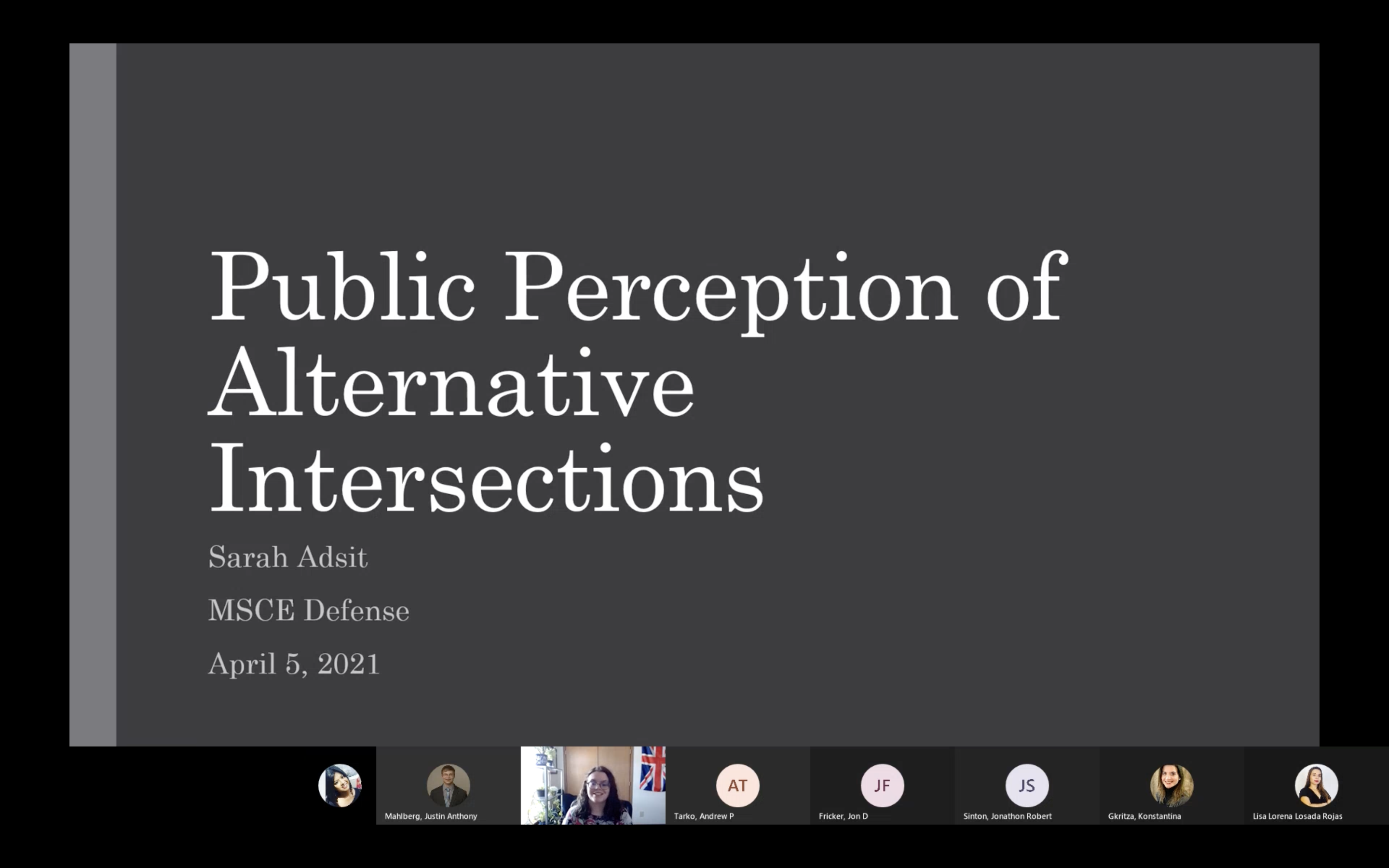Sarah Adsit successfully defended her Master's thesis
Master's thesis entitled "Public Perception of Alternative Intersections"
Sarah Adsit successfully defended her Master’s thesis entitled "Public Perception of Alternative Intersections" on May 5th, 2021. We are incredibly proud of her. We greatly appreciate her hard work over the past several years.
Congrats, Sarah!

Full Abstract
Improving intersection safety and efficiency are the primary goals of alternative intersection designs. These designs seek to improve on traditional traffic control methods, often by reducing intersection conflict points, reducing or eliminating time-wasting signal phases, or both. However, public opposition to these new designs can be a large barrier to implementation of alternative intersections despite their known safety and efficiency benefits.
This study evaluated current public perception and factors influencing that perception for four alternative intersection designs - the roundabout, the restricted crossing U-turn (also known as J-turn and reduced conflict intersection), the displaced left turn (also known as the continuous flow intersection), and the diverging diamond interchange (also known as the double crossover diamond interchange).
To achieve this objective, a survey instrument was designed and distributed to a target sample of 1,000 adults residing in the State of Indiana. The survey solicited participant awareness of these designs, acceptance of a potential implementation of the design in their community, and driver confidence using the design along with participant socio-demographic data. Descriptive and inferential statistical analysis was then conducted.
The survey results indicate that residents of Indiana are not aware of designs not currently widely implemented in the state, that opposition to these rarer designs is prominent, and that drivers were generally less confident in their ability to safely navigate these unfamiliar designs. Younger respondents, male respondents, more highly educated respondents, respondents who travel more often or for farther distances, and respondents who rate their own driving ability highly are more likely to be aware, accepting, and confident using alternative designs.
The results of this study will inform future outreach efforts pertaining to alternative intersections by improving transportation agency understanding of public opinions and primary concerns regarding these designs and provide potential paths for improving public perception.
